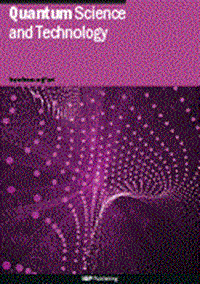Scaling up to problem sizes: an environmental life cycle assessment of quantum computing
IF 5
2区 物理与天体物理
Q1 PHYSICS, MULTIDISCIPLINARY
引用次数: 0
Abstract
With the demonstrated ability to perform calculations in seconds that would take classical supercomputers thousands of years, quantum computers namely hold the promise of radically advancing sustainable IT. However, quantum computers face challenges due to the inherent noise in physical qubits, necessitating error correction for reliable operation in solving industrial-scale problems, which will require more computation time, energy, and electronic components than initial laboratory-scale experiments. Yet, while researchers have modeled and analyzed the environmental impacts of classical computers using Life cycle assessment the environmental performance of quantum computing remains unknown to date. This study contributes to filling this critical gap in two ways: (1) by establishing an environmental profile for quantum computers based on superconducting qubits; and (2) by comparing it to a functionally equivalent profile of a state-of-the-art supercomputer. With the comparison based on the problem size, the paper shows how the usage time can drive an environmental advantage for quantum computers under specific scaling conditions and quantum error correcting codes. The results emphasize that quantum error correction hardware has a substantial environmental impact due to the numerous electronic components needed to achieve 100 logical qubits. This paper can serve as a basis for designing more environmentally friendly quantum computers and for establishing their environmental profiles, as well as those of the human activities that will use them.扩大问题规模:量子计算的环境生命周期评估
量子计算机能够在几秒钟内完成传统超级计算机需要数千年才能完成的计算,因此量子计算机有望从根本上推动可持续信息技术的发展。然而,由于物理量子位的固有噪声,量子计算机面临着挑战,在解决工业规模问题时需要进行纠错以实现可靠的运行,这将比最初的实验室规模实验需要更多的计算时间、能量和电子元件。然而,尽管研究人员已经使用生命周期评估对经典计算机的环境影响进行了建模和分析,但迄今为止,量子计算的环境性能仍然未知。本研究通过两种方式填补了这一关键空白:(1)建立了基于超导量子比特的量子计算机的环境概况;(2)将其与最先进的超级计算机的功能相同的配置文件进行比较。通过基于问题规模的比较,本文展示了在特定缩放条件和量子纠错码下,使用时间如何驱动量子计算机的环境优势。研究结果强调,由于实现100个逻辑量子位需要大量的电子元件,量子纠错硬件对环境有重大影响。这篇论文可以作为设计更环保的量子计算机和建立它们的环境概况以及将使用它们的人类活动的基础。
本文章由计算机程序翻译,如有差异,请以英文原文为准。
求助全文
约1分钟内获得全文
求助全文
来源期刊

Quantum Science and Technology
Materials Science-Materials Science (miscellaneous)
CiteScore
11.20
自引率
3.00%
发文量
133
期刊介绍:
Driven by advances in technology and experimental capability, the last decade has seen the emergence of quantum technology: a new praxis for controlling the quantum world. It is now possible to engineer complex, multi-component systems that merge the once distinct fields of quantum optics and condensed matter physics.
Quantum Science and Technology is a new multidisciplinary, electronic-only journal, devoted to publishing research of the highest quality and impact covering theoretical and experimental advances in the fundamental science and application of all quantum-enabled technologies.
 求助内容:
求助内容: 应助结果提醒方式:
应助结果提醒方式:


